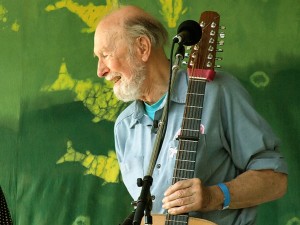
As researcher Clifford Nass famously noted, multitaskers are “suckers for irrelevancy.” Because “everything distracts them,” their intellectual performance on important tasks deteriorates.
As more of my students bring laptops and phones to class, their abilities to concentrate and retain even simple instructions delivered face to face seem to be under assault. In many cases these are traditionally “strong” students: top-ranked in their high school classes, ambitious, and often intent on pursuing advanced degrees in medicine and other fields. Why are so many not retaining important conclusions or pieces of information?
There is no question a laptop is a great note-taking device. Many of us can type faster than we can write. But one would have to believe in the tooth fairy to accept the premise that computers in the classroom are only used to deal with the material covered on a given day. The sacred cow of full connectivity on campus makes it a virtual certainty that students may be placing their bodies in the classroom, but taking their minds elsewhere. Multi-tasking is the norm. One Stanford faculty member notes that his research indicates a full quarter of his students are trying to use four different media at the same time while there are ostensibly focused on writing term papers. We’ve all read the results of that kind of writing, and it’s usually not pretty.
The fundamental problem is that almost no one is good at multi-tasking. We are simply not wired to split short-term memory between a variety of stimuli at once. We may think otherwise. But there’s near unanimity in the literature on comprehension that critical thinking declines when we fragment our attention. To put it simply, multitasking makes us just a little bit stupid. As researcher Clifford Nass famously noted, multitaskers are “suckers for irrelevancy.” Because “everything distracts them,” their intellectual performance on important tasks deteriorates. Sometimes the person addicted to a digital stew of stimuli is the last to know that they have become intellectually impaired. It’s a common mistake to assume that being “busy” means being “fully engaged.” We perform our busyness as a badge of honor. But it’s closer to the truth to conclude that the more we construct lives where external stimuli are a constant, the less we are able to get past the self-induced noise that complicates the completion of an important task.
Try a simple experiment. Try to read your e-mail or a series of text-messages while also listening to someone explain how to get to an address on the other side of town. No GPSs allowed. An active and full-time listener will probably process the directions correctly, or ask questions until they have the mental map they need. The split-time listener is more likely to end up lost, often compounding their addiction to distracted multi-tasking by calling from from a moving car to get new directions.
Of course there are many significant exceptions to acknowledge: those from all walks of life who still have the will to track the explication of a complex idea for an extended period; younger readers happily caught in the thrall of a writer or literary genre; newspaper consumers who will follow an investigative story across three pages of a broadsheet; or the curious who are sufficiently engaged to listen to another for a sustained amount of time. But these individuals increasingly seem to be cultural outliers. We now tend to notice a special passion for thirsty listening and reading. They stand out from the norm.
So the caution stands: the fragmentation of daily life into competing multiple activities undermines competencies we should want to nurture and protect. The things worth doing in life –if they are truly worthy of our time–are too important to be compromised by incessant (and non-linear) distraction. My guess is that Franz Joseph Haydn would have never gotten around to writing those fabulous hundred and six symphonies if he owned a smartphone and an e-mail account. How would he have had the time?
